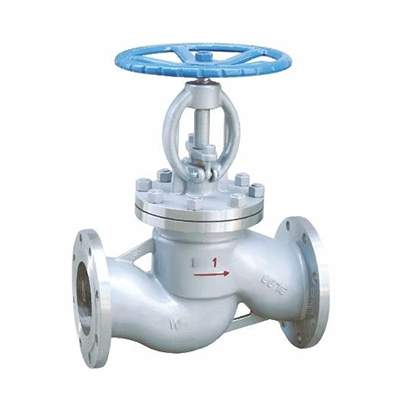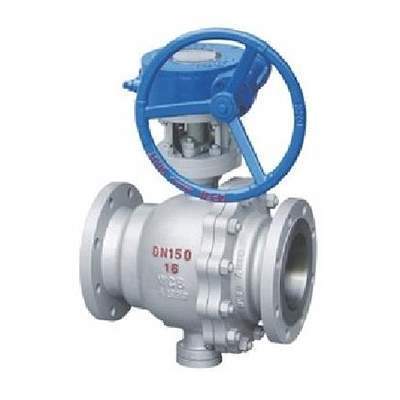Welcome to My Blog!
Before we dive into the content, if you’re interested in our products or have any questions, please feel free to visit our Contact Us page on the website. Our team is ready to assist you with inquiries, orders, or any support you may need.
Now, let’s get started on our journey together. I hope you find the content here insightful, engaging, and valuable.
Stop valves play a critical role in industrial piping systems by controlling the flow of liquids and gases, ensuring safety, and maintaining operational efficiency. From water supply networks to chemical processing plants, these valves are essential components that allow operators to manage fluid flow, isolate sections for maintenance, and prevent damage caused by leaks or overpressure. In this article, we explore the types, applications, selection criteria, installation practices, and maintenance tips for stop valves in industrial settings.
What Are Stop Valves and How Do They Work?

A stop valve is a mechanical device designed to regulate, stop, or allow fluid flow through a pipeline. Its primary function is to provide precise control over water, gas, or chemical lines. Stop valves consist of a body, a movable disc or ball, a stem, and a handle or actuator that allows the operator to open or close the valve.
Stop valves work by adjusting the position of an internal mechanism, such as a disc, globe, or ball, to either block or permit fluid flow. When fully closed, the valve prevents any fluid from passing through, making it a crucial safety feature in industrial piping systems. These valves are typically installed at critical points where control and isolation are necessary.
Types of Stop Valves Used in Industrial Piping
Industrial piping systems use several types of stop valve, each tailored to specific applications:
- Globe Stop Valve: Designed for precise flow control, these valves are commonly used in water and chemical lines.
- Angle Stop Valve: Ideal for tight spaces, they allow the pipeline to change direction efficiently.
- Needle Stop Valve: Offer fine control over low flow rates, often used in instrumentation systems.
- Ball Stop Valve: Provide quick shut-off and are suitable for high-pressure applications.
Comparing these types helps engineers choose the most appropriate valve for specific industrial requirements.
Materials and Construction of Industrial Stop Valves
Stop valves are manufactured from various materials to meet different operational needs:
- Brass Stop Valves: Corrosion-resistant and cost-effective, commonly used in domestic and industrial water systems.
- Stainless Steel Stop Valves: Highly durable and suitable for high-temperature, high-pressure, or chemical applications.
- Bronze and Other Materials: Used in specialized systems requiring additional strength or corrosion resistance.
Selecting the right material is essential for longevity and safety. Factors like fluid type, temperature, and pressure should guide material selection.
Applications of Stop Valves in Industrial Systems
Stop valves are versatile and used across numerous industrial applications:
- Water Supply and Plumbing Systems: Control flow and isolate sections for maintenance.
- HVAC and Cooling Systems: Regulate water and coolant flow efficiently.
- Chemical and Petrochemical Industries: Ensure safe handling of corrosive or hazardous fluids.
- Gas Lines and Fire Protection Systems: Enable rapid shut-off in emergencies.
- Irrigation and Agricultural Systems: Control water distribution across large areas.
Each application has specific requirements for valve type, material, and certification standards.
How to Select the Right Stop Valve for Industrial Use
Choosing the right stop valve involves several considerations:
- Pressure, Temperature, and Fluid Type: Ensure the valve can withstand operational conditions.
- Size and Flow Rate Requirements: Correct sizing prevents turbulence and pressure loss.
- Certification and Industry Standards: ISO, ANSI, and CE certifications indicate compliance and reliability.
Consulting technical datasheets and manufacturer recommendations is critical to select a valve that meets operational and safety standards.
Installation and Maintenance of Stop Valves
Proper installation and maintenance are vital for long-term performance:
- Installation Procedures: Ensure correct orientation, secure connections, and use of thread sealants like Teflon tape.
- Common Mistakes: Avoid backward installation or over-tightening, which can cause leaks or damage.
- Maintenance Tips: Regular inspection, lubrication, and cleaning extend valve life and prevent operational issues.
- Troubleshooting: Identify leaks, unusual noises, or reduced flow early to prevent major system failures.
Proper maintenance not only enhances safety but also reduces downtime and maintenance costs.
Benefits of Using Stop Valves in Industrial Piping

Stop valves provide numerous advantages in industrial systems:
- Efficient Flow Control: Precise regulation of liquids and gases improves process stability.
- Enhanced Safety: Ability to quickly isolate sections prevents accidents and system damage.
- Reduced Downtime and Maintenance Costs: Early detection and isolation of issues minimize operational interruptions.
- Compliance with Standards: Certified valves ensure adherence to industry regulations, improving reliability and credibility.
By investing in high-quality stop valves and proper maintenance, industries can optimize system performance and safety.
Conclusion
Stop valves are indispensable components in industrial piping systems. Their ability to control fluid flow, enhance safety, and facilitate maintenance makes them essential in diverse applications—from water supply to chemical processing. By selecting the appropriate type and material, ensuring proper installation, and performing regular maintenance, industrial operators can achieve optimal performance and system reliability.
FAQ
What is a stop valve used for?
A stop valve is used to control or completely stop the flow of liquids or gases in a piping system, allowing for maintenance, safety, or flow regulation.
How does a stop valve work?
It works by moving an internal disc, ball, or globe to either block or allow fluid flow through the pipe. Turning the handle opens or closes the valve.
What types of stop valves are commonly used?
Common types include globe stop valves, angle stop valves, ball stop valves, and needle stop valves, each suited for different industrial or residential applications.
How do I maintain a stop valve?
Regularly inspect for leaks, clean moving parts, lubricate if needed, and replace worn components to ensure reliable operation.
What materials are stop valves made from?
Stop valves are typically made from brass, stainless steel, or bronze, chosen based on the fluid type, temperature, and pressure requirements.
Need Help Choosing the Right Stop Valve?
If you’re unsure about which stop valve is best for your industrial or commercial piping system, our experts are here to guide you. Contact us today for a personalized consultation, and ensure your system operates safely and efficiently. Don’t wait until a leak or failure occurs—get in touch now to protect your equipment and maintain smooth operations!
